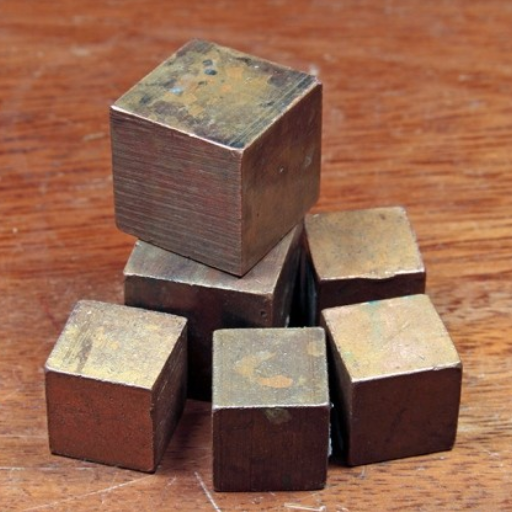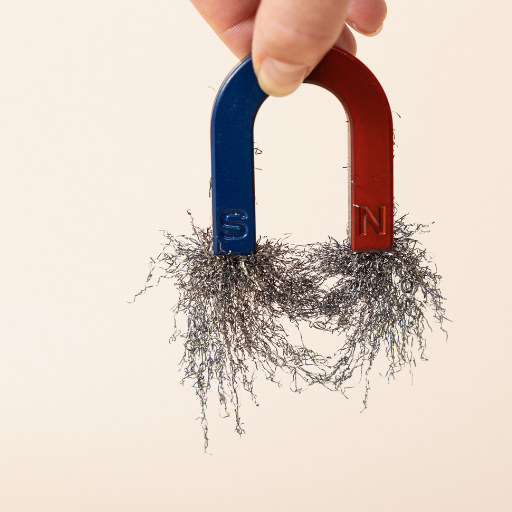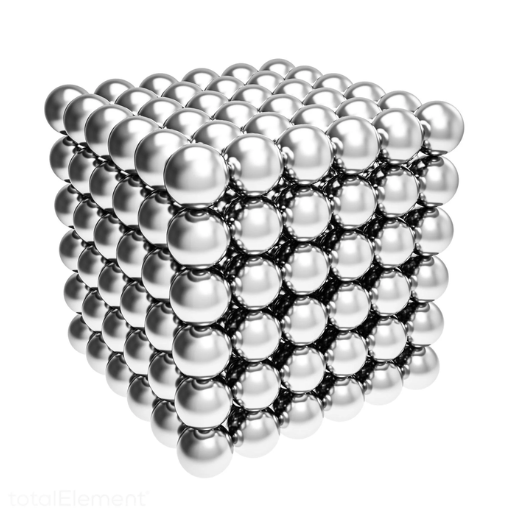For centuries, and even today, understanding the magnetic properties of metals has captivated delight metals and tech scientists, engineers, and all other inquisitive people. These days, people are becoming increasingly aware of the importance of magnets in powering electronic devices, enabling industrial processes, and many other processes. You can find the answers to all your questions regarding magnetism and its relationship with various metals in this guide. We will examine common examples of magnetic metals, uncover what makes certain metals magnetic, and discuss several applications where magnetism plays a vital role. Regardless of whether you are a student, a hobbyist, or a professional, broadening your knowledge will be empty with the insights and information this guide will provide.
What Magnet Types Exist?

Based on their construction and magnetic characteristics, magnets can be broadly divided into three types: permanent magnets, temporary magnets, and electromagnets. Permanent magnets, often constructed of neodymium, ferrite, or samarium cobalt, lose their magnetism only after a number of years. Many temporary magnets, often constructed from soft iron, exhibit magnetism only when in the presence of a magnetic field. Others lose their magnetism after the field is no longer present. Electromagnets can also be constructed by rotating a wire coil filled with electricity; they have a controllable magnetism which is useful in many industries. Each type serves a unique purpose, from everyday utilization to advanced technology.
How Do Different Types of Magnets Work?
all forms of magnetism stem from the materials and structure of the magnet. Permanent magnets, such as neodymium and ferrite, depend on the alignment of atomic magnetic domains, which are fixed and provide a lasting accumulation of magnetism. Conversely, temporary magnets are able to absorb magnetism solely in the presence of an external magnetic field; their cores, commonly made of soft iron, are useful in applications that need changeable magnetism. It is remarkable how electromagnets make use of electricity as well. When an electric current flows through a coil of wire, a magnetic field forms around it. Once the current ceases, so does the magnetism; this characteristic makes electromagnets very useful in industrial power machines, transport machinery, medical equipment, and so forth. Each of these type of magnets possess certain abilities that make it more suitable for particular uses.
What Are Permanent Magnets and How Are They Used?
Permanent magnets serve as integral materials renowned for their consistent production of magnetism without the application of an external source. Typically made from metals like iron, nickel, and cobalt alongside rare elements like neodymium, these magnets are commonplace in the construction of everyday machinery. Such components include electric motors, speakers, sensors, and even magnetic locks used to easily secure doors. Their remarkable consistency and longevity are what make these shaped neodymium iron magnets vital in today’s world.
Understanding Temporary Magnets and Their Applications
One of the most intriguing facts related to temporary magnets is that they only derive their magnetic property in the presence of an external magnetic field, and when the field is removed, their magnetism is removed. This peculiar behavior makes this type of magnet highly useful in certain applications where control of magnetic forces becomes vital. In my experience, these magnets are typically found in electromagnets, which are instrumental in cranes used to lift heavy metallic objects, electric bells, and some relays. Their ability to turn on and off depending on the situation is simply unparalleled, and most industries where flexibility is required greatly appreciate such feature.
Which Magnetic Metal Are Commonly Found?

Because of the atomic boundaries that make it easier for the magnetic domains to align, iron, cobalt, and nickel are awesome examples of naturally occurring magnet-themed metals. Of the three, iron is most utilized as a result of its broad availability and distinctively strong ferromagnetic features. Furthermore, steel and select neodymium-containing alloys have distinct and specialized magnet properties that make them ideal for industrial usage.
Exploring Ferromagnetic Metals Such as Iron
Indeed, iron stands out as one of the most common ferromagnetic metals that you will find, and its distinct magnetism makes it useful in a wide range of applications. iron is particularly remarkable for a number of parameters that I will detail below:
- High Magnetic Permeability – These characteristics enable special and extraordinary uses such as in transformers and motors since such an item concentrates iron flux which makes it highly functional. It also means that it can increase and concentrate the magnetic fields with ease.
- Retentivity – This is when iron is capable of keeping magnetism even while an external magnetic field is taken off. Retentivity of iron is not very high, but it is fairly good allowing the making of temporary magnets and semi-permanent ones.
- Saturation Magnetization – There exists high degree of magnetization generated by an iron in a magnetic field which is useful as large forces of magnets can be developed which have their bearish particular benefit while making electromagnetic devices.
- Abundance and Cost-Effectiveness – There is no doubt that iron is one of the elements on Earth. This makes it economical and well within reach for all industries due to its prevalence.
- Versatility in Alloys – It is often used with other materials like nickel, carbon, and some others to make steel, which expands the working regions of iron as well as increasing its magnetic as well as physical properties.
The explanation for iron’s dominance across the construction, manufacturing, electronics, and energy industries lies in its ferromagnetic characteristic, along with the practical advantages it offers. As a material, it combines cost effectiveness with dependability, making iron a vital resource in many technological processes.
Why Are Nickel and Cobalt Considered Magnetic Metals?
I consider cobalt and nickel to be rather magnetic metals due to their intrinsic ferromagnetic properties. The atomic structures of these elements permit electrons’ alignment in a manner sufficient to cause the generation of strong atomic magnetic fields. Often utilized in alloys, Nickel increases the durability of the magnetic field, which makes it suitable for permanent magnets as well as electronic components. On the other hand, cobalt exhibits exceptional temperature stability, which is necessary for high-performance motors and turbines. The magnetic versatility and resilience of both metals, cobalt and nickel, make them critical to technological advancements from renewable energy systems to medical devices.
A List of Magnetic Metals: What Metals Are Considered Magnetic?
The classification of metals that are attracted to a magnet is those that have strong magnetic properties because of the ordering of their atomic and electronic structures. Some of the most well known magnetic metals include iron, nickel, and cobalt. Ni, Co, and Fe are all ferromagnetic, which implies that they are capable of being magnetized and will sustain magnetism for an extended period of time. Also regarded as neodymium, some alloys like steel (iron-based) and certain rare earth materials like neodymium are thought to be ferromagnetic and are commonly employed in industrial and technological fields.
Why Are Some Metals Not Magnetic?

The primary explanation for the absence of magnetism in some metals is due to the atomic structure alongside the arrangement of electrons. Based on my experience in the industry, metals which are non-magnetic, such as copper, gold, and aluminum, have electron configurations that lead to electrons being paired. These pairs of electrons have magnetic properties that are nullified due to they cancel out. Non-ferromagnetic metals do not have the distinct unpaired electrons or aligned atoms to generate the requisite magnetic field. This contrast is important in the selection of materials for various applications as it affects their behavior in regards to magnetism.
Understanding the Magnetic Properties of Metals
The presence of unpaired electrons, together with the material’s atomic structure, strongly affects the magnetic properties of metals. Metals that are ferromagnetic, e.g., iron, cobalt, and nickel, have unpaired electrons, and their atomic domains are arranged in a manner that leads to a strong magnetic field. On the other hand, diamagnetic and paramagnetic materials have very weak or no magnetism because of the lack of alignment or sufficient unpaired electrons. Knowing these directions is important for choosing most metals with desired magnetic properties, e.g., in electronics or medical devices, or in industrial machines.
What Makes Non-Magnetic Metals Different?
the absence of magnetism in some metals stems from the atomic structure’s inability to sustain strong magnetic fields; non-magnetic Metals are considered some of the most valued components within industries that require the minimization of magnetic interference, such as MRI machines and electrical wiring. As a result, aluminum, copper, and lead stand out for their versatility, allowing the circumvention of highly magnetic regions, rendering them incredibly useful in harsh environments. These metals are also devoid of having unpaired electrons, which results in the alignment of atomic domains being insignificant, along with supporting the absence of strong magnetism.
How to Detect Non-Magnetic Metals?
Non-magnetic metals can be detected through methods like density testing, measurement of electric conductivity, and X-ray fluorescence (XRF) analysis. These methods facilitate the prompt detection of non-magnetic metals such as aluminum, copper, and lead. Moreover, the use of portable XRF analyzers for metal identification ensure speed and accuracy in sorting and processing metals in an industrial setting.
What Makes Metals Magnetic?

The atomic makeup of metals and their electron configurations dictate the level of magnetism in the materials. I can affirm that metals like iron, cobalt, and nickel are among the principal metals exhibiting magnetic properties, and this is primarily due to the existence of unpaired electrons in their atomic orbitals that produce a magnetic dipole. The magnetic phenomena are exhibited as a result of an arrangement of magnetic dipoles routinely leading to a condition, known as magnetic polarization or a permanent magnet, in which these dipoles are aligned to point in the same direction. Magnetism is further enhanced by the crystal structure of the metal, which enables such dipole alignment; therefore, some metals are naturally magnetic while others are not.
Role of Magnetic Domains in Magnetism
Magnetic domains are sections of a material that contain dipoles that are oriented in a similar manner. In conjunction, these domains contribute to the magnetic properties of a material. When an external magnetic field is applied, these domains expand and change their orientation to be parallel to the field, therefore, enhancing the material’s magnetistic properties. Magnetic domains’ movement and alignment delineate strongly and weakly magnetic materials.
How Does an External Magnetic Field Influence Metals?
To explain how an external magnetic field can affect metals, I like to explain it in stages. Starting metals react to magnetic influences in distinctly different manners; this varies with the metals’ precise magnetic character. Certain metals such as iron, nickel, and cobalt are Ferromagnetic, which means they have strong responses to external magnetic fields. Metals such as aluminum and copper also respond to magnetic fields, but very weakly.
This is how external magnetic fields affect metals:
- Magnetic Domain Alignment: Ferromagnetic metals experience an increase in net magnetism as the microscopic dipoles, called ‘magnetic moments’, increasingly orient with the external field.
- Magnetization Saturation: A material is said to be in a saturation state when it has the same degree of magnetization as the external magnetic field offered, i.e., the field is sufficiently strong to make almost all the magnetic domains perfectly aligned. Now it is noted that beyond this point, any further increase in external magnetic field will not intensify the magnetism.
- Hysteresis: Hysteresis is when some ferromagnetic metals keep some degree of their magnetization regardless of the supplied external field. This property is notably put to use in permanent magnets as well as in some magnetic storage devices.
- Weak Magnetic Response in Non-Magnetic Metals: Even though they are considered to be non-magnetic, metals like copper, silver, and gold do respond weakly to the induced currents as well as to the diamagnetic changes when subjected to a magnetic field. This response becomes distinctly more feeble than ferromagnetic materials.
- Temperature Influence (Curie Temperature): The temperature also plays an important role. As an example, if a ferromagnetic material is heated above the Curie temperature, it becomes paramagnetic, which means that the material will lack magnetisation as the dipoles disorganise.
Every parameter such as magnetic domains, field strength, temperature, and type of material, explain how a metal may respond to an external magnetic field. The interaction of these miniature magnets is incredibly useful when put into practice, for example: in the production of industrial magnets and electronic devices.
How Do Strong Magnetic Fields Affect Magnetic Material?
Relationships involving magnetic materials may be drastically altered by the presence of high-intensity magnetic fields, and these changes will depend on some fundamental factors. Let us analyze how some of these factors operate:
- Magnetic Domains: Domains of Magnetism: In the absence of external influence, all magnetic materials are composed of numerous magnetic domains, which are oriented in certain directions. If a sufficient external magnetic field is applied, these domains move so that the biggest portion of the magnetized material is parallel to the field of magnetization. This increases the magnetization of the material until a certain point where it becomes static; this point is known as magnetic saturation.
- Field Strength: Any external magnetic field will exert influence to a certain extent, as well as internally, the strength of that influence will depend on the strength of the magnetic field. If the applied field is weak, it might only alter a domain to such an extent that some of the molecules’ edge borders get aligned, while a stronger field could align all. If the magnetization of the material reaches saturation level, any subsequent increase in the field strength will at best have no effect at all.
- Temperature: The response of any material that is ferromagnetic depends largely on temperature. When temperature increases, thermal energy can easily overcome the energy holding the magnetic domains together. Once a certain point, called ‘Curie temperature’, is reached, ferromagnetic material loses its ability to be under the influence of a strong field and starts behaving like paramagnetic material, albeit with a weaker response. In some cases, material can lose its ferromagnetic properties completely, enabling it to remain paramagnetic in the presence of a strong field as well.
- Material Type: Different ferromagnetic materials respond in a different way to an external magnetic field, such as cobalt, nickel, iron, or self-supporting permanent magnets. When these materials are exposed to a strong magnetic field, they can strongly magnetize or form some degree of magnetic polarization, while paramagnetic and ferromagnetic materials are at the opposite end of the spectrum, showing weak microscopic regions of magnetism within the material.
Understanding how ferromagnetic materials respond to intensive magnetic fields is vital to the understanding of device operation. This is important when devising electromagnets, transformers, and data storage devices where magnetic behavior needs to be controlled in an exact manner.
Are Rare Earth Metals Magnetic?

Indeed, these metals are called “rare earth” for a reason. Their formation and existence are largely the result of specific geochemical processes at specific places. Thus, some metals could be magnetic, but their characteristics would differ depending on the ones used: In particular, neodymium, samarium, and dysprosium have strong magnetic properties and are crucial elements to obtain strong permanent magnets. Such magnets are now extensively used in advanced technologies such as electric vehicles, wind turbines, and high-performance electronics. An assortment of other rare earth metals may have weaker magnetic properties or be paramagnetic depending on their electronic configurations.
What Are the Magnetic Properties of Rare Earth Metals?
I would say that the amazing magnetic properties of rare earth metals are of utmost importance to modern technologies. Rare earth elements such as neodymium, samarium, and dysprosium are well known for their ability to create extremely powerful permanent magnets. These magnets are essential in achieving exceptional efficiency and effectiveness in electric motors, wind turbines, and precision electronics. The distinct electronic configuration of these metals, mainly due to their unpaired electrons, accounts for their exceedingly high magnetic anisotropy and coercivity. This makes them irreplaceable in industries that require high power and miniature magnetic solutions. While not all rare earth metals exhibit strong magnetism, each of their unique features is skillfully integrated to cater to specific technological requirements.
Examining the Use of Rare Earth Metals in Modern Technology
Due to their rare and extraordinary luminescent, conductive, and magnetic features, modern technology has incorporated rare earth metals and considers these metals extremely important. They are widely used in the manufacture of high-efficiency magnets used in electric vehicles, turbines, and portable electronics, as well as for phosphors in LED lights and displays. Apart from aiding in making devices more powerful, rare earth metals assist in transitioning to environmentally friendly and energy-efficient options, which further cements these metals as essential materials in technological development.
How Do Rare Earth Metals Produce a Magnetic Field?
The distinct electron arrangements of rare earth metals allow them to create a magnetic field. As an industry insider, I know that neodymium and samarium have unpaired electrons in their outer shells. When such free electrons are correctly oriented, they produce considerable magnetic moments, and when such electrons are both aligned and partnered, they produce considerable magnetic moments. The powerful magnetic characteristics of these metals stem from these factors. We can implant these elements into varied alloys to increase their magnetic strength and stability, which is greatly needed in advanced technologies such as electric motors and high-speed power generators.
Reference
- What Metals Are Magnetic? – Discusses elemental metals like iron, cobalt, and nickel, and their magnetic properties.
- Magnetic Properties – Explains the magnetic characteristics of transition metals and their unpaired electrons.
- Magnetic Properties of Metals and Alloys – A detailed review of magnetic properties in soft and hard magnetic materials.
Frequently Asked Questions (FAQs)
Q: What type of magnetism causes certain metals to be magnetic?
A: The type of magnetism that causes certain metals to be magnetic is primarily ferromagnetism. This occurs when metals like iron and steel strongly attract magnetic fields due to their atomic structure, allowing them to produce magnetic fields and interact with magnetic fields effectively.
Q: Which metals are typically considered ferromagnetic?
A: Common metals that are considered ferromagnetic include iron, cobalt, and nickel. These metals are strongly attracted to magnets and can be magnetized themselves, making them suitable for use in permanent magnets.
Q: Are all stainless steels magnetic?
A: Not all stainless steels are magnetic. While some types of stainless steel, such as certain ferritic and martensitic grades, are magnetic, others, like austenitic stainless steel,s are not magnetic due to their crystalline structure, which doesn’t allow them to be attracted to a magnet.
Q: Why are some metals not magnetic?
A: Some metals are not magnetic because their atomic structure does not allow them to strongly attract magnetic fields. For example, diamagnetic metals, such as copper and gold, actually repel magnetic fields, while others, like aluminum, are considered non-magnetic because they do not interact with magnetic fields significantly.
Q: How do permanent magnets work?
A: Permanent magnets are made from ferromagnetic materials that have been magnetized, meaning their atomic domains are aligned to produce a consistent magnetic field. This allows them to create magnetic fields and attract other ferromagnetic materials.
Q: Can metals that are non-magnetic be used in magnetic applications?
A: Yes, metals that are non-magnetic can still be used in magnetic applications. For example, aluminum is used in magnetic resonance imaging (MRI) machines for its non-magnetic properties, which help produce clear images by not interfering with the magnetic fields.
Q: What is the role of magnetic flux density in magnetism?
A: Magnetic flux density is a measure of the strength and concentration of a magnetic field in a given area. It plays a crucial role in determining how strongly a material will be attracted to a magnetic field, influencing the performance of magnetic applications like refrigerator magnets and industrial magnets.
Q: How does the applied magnetic field affect metals?
A: An applied magnetic field can magnetize certain metals, aligning their atomic domains to create a magnetic attraction. This is particularly true for ferromagnetic metals, which can become temporary magnets themselves when exposed to a strong magnetic field.
Q: Are there metals that repel magnetic fields?
A: Yes, there are metals known as diamagnetic metals that repel magnetic fields. These include metals like bismuth and copper, which create a very weak opposing magnetic field when exposed to an external magnetic field, effectively causing them to repel magnetic forces.







